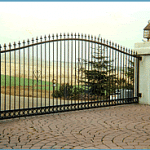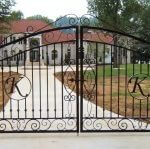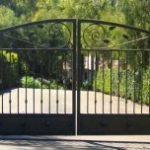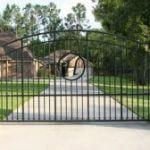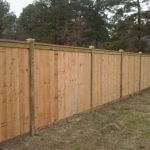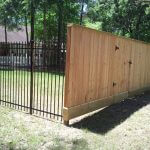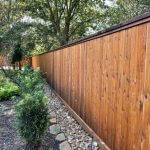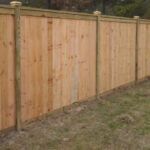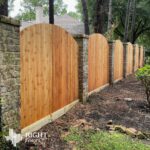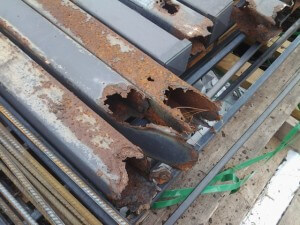
A well-maintained fence is not only a crucial aspect of your home’s aesthetics but also a fundamental part of security, privacy, and even property value. However, fences are not indestructible, and like most elements of a home, they require regular care and maintenance. Making the decision to repair or replace a fence can be a tough call for many homeowners. In this comprehensive guide, we break down the telltale signs that your fence may need some TLC and provide you with all the information you need to make the best decision for your property.
The Vital Importance of Fence Maintenance
First and foremost, understanding the significance of keeping your fence in top condition is critical. A fence is more than just a structural barrier; it’s a design element that contributes to the overall look of your home. Neglected fences not only give a poor impression but also may pose safety hazards. Regular inspections, treating, and repairs are essential maintenance practices that can significantly extend the life of your fence.
Signs Your Fence Needs Repair
Detecting issues early on can save you from the stress and cost of a full replacement. Several red flags indicate that your fence is in need of repair. Here are the most common signs to look out for:
Rotting Wood
Wooden fences are particularly vulnerable to rot, especially when exposed to moisture. Rotting posts or panels can weaken the structure and compromise its stability. Regularly inspect posts and panels for any signs of decay, like soft spots, dark patches, or visible mold growth.
Leaning or Missing Posts
Leaning posts not only spoil the appearance of your fence but also suggest a potential hazard. Misaligned or missing posts can cause sections of your fence to collapse, creating unsafe areas, particularly for pets and children. Ensure the alignment of your posts is intact, and address any leaning or missing profiles promptly.
Rusty Metal Fences
Metal fences are prone to rust, which, if left unchecked, can lead to structural issues. Look for areas of your metal fence where the coating is damaged or has flaked off, as these are prime spots for rust to take hold.
Loose Panels
Loose or wobbly panels are not only unsightly but also a security concern. They can be easily manipulated and potentially provide an entry point for unwanted guests.
Factors Indicating Replacement
While repairs can patch up minor issues, there comes a point when it’s more prudent to invest in a new fence. Certain factors can indicate that replacement is the better path forward:
Extensive Damage
If the majority of your fence is in a state of disrepair, it might be more cost-effective to replace the whole fence rather than address each issue individually.
Cost of Repairs
Before deciding on repair or replacement, gather quotes for the necessary fixes. If the repair costs are close to the price of a new fence, it might make more sense to go for the latter, which can offer you a fresh start with a longer lifespan.
Safety Concerns
Fences serve as a barrier to your property; if they cannot perform this function safely, due to parts that are ready to collapse or the presence of sharp, protruding materials, then replacement is the best option for the well-being of your household.
Cost Analysis
Understanding the financial scope of repairs versus a new installation is a vital part of the decision-making process:
Repair Costs
The price of repairing a fence can vary greatly depending on the extent of the damage and the materials used. If your fence is relatively new and only has minor issues, repairing might be the more economical choice.
Replacement Costs
The cost of a new fence can be substantial, but it also comes with the benefit of a more extended lifespan. Consider the average lifespan of different fence materials when weighing the financial decisions—vinyl, for instance, being more expensive upfront but requiring little to no maintenance compared to wood.
Choosing the Right Material
Material choice is a significant aspect of your fence’s durability and the decision-making process:
Wood Fences
Wood is a classic fence material known for its natural beauty, but it requires more maintenance than other options. Regularly treating wood fences can prevent rot and enhance their longevity.
Vinyl Fences
Vinyl is a low-maintenance alternative to wood, resistant to rot and insects. It also comes in various styles and colors.
Metal Fences
Metal fences, particularly wrought iron or aluminum, are robust and have a long life if appropriately maintained. Regular repainting or treatment for rust is essential.
Hire a Professional
While minor repairs can be done by homeowners, larger projects such as fence replacement should be left to professionals. A professional fence contractor has the expertise, tools, and experience necessary to ensure a high-quality and long-lasting installation. Attempting to replace a fence without proper knowledge or equipment can lead to mistakes, costing more time and money in the long run.
Time to Replace Your Fence
Deciding to repair or replace your fence is a significant step in maintaining your home’s security, privacy, and curb appeal. Regular inspections and timely action can save you from costly replacements down the line. With this guide, you’re equipped to assess your fencing needs and make informed decisions that contribute to the longevity and value of your property. Remember, the condition of your fence speaks volumes about the care you put into your home—make sure it says all the right things!
If you’re looking to replace your fence, call our team here at Right Fence Company, with over a thousand fences done in The Woodlands area and beyond, we are the best fence contractor for your next project. Get a free quote on your new fence. Don’t wait until it’s too late—protect your home and loved ones with a strong, sturdy fence today!


